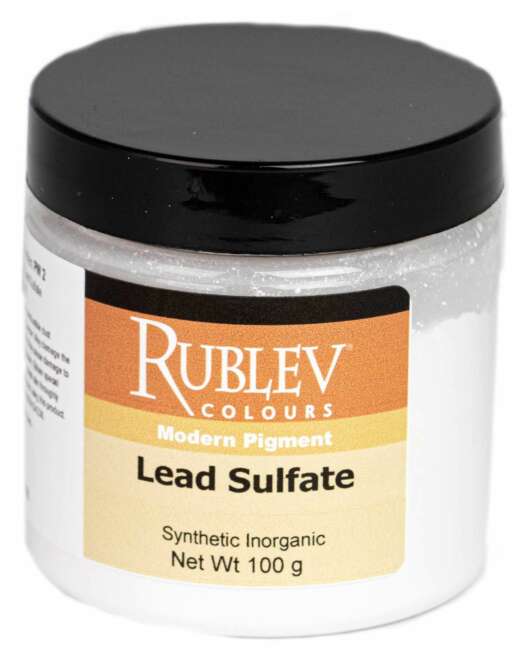
When making paint, we sometimes encounter surprises. Some are disappointing. Others offer exciting possibilities. This is the latter.
Recently a large shipment of lead white pigment arrived at Natural Pigments. We inspected the pigment and accompanying documentation and placed the entire lot in production. That evening production prepared a small batch of lead white number two—our lead white ground in walnut oil. However, the pigment’s color was not white when ground in oil; it was very pale pink.
Although the color was pleasant, the batch (# 6938) was rejected because it was out of specification with our standard of Lead White #2. When batches are rejected, which is not often, we typically use the failed batch in tests and studies. This time, we thought a few artists might appreciate it just like many did of a batch of coarse particle stack process flake white that occurred a few years earlier. (For that story, read the following article, Variations of Stack Flake White.
In the past, we’ve encountered a bag or two of pinkish lead white from pigment suppliers, but an entire lot? The next day we called the manufacturer to learn why an entire lot had a pink cast.
After a lengthy discussion with the production manager of our pigment supplier, he told us that a small part of their batch was unreacted. To understand this, let’s explain how to lead white (basic lead carbonate) pigment is made today.
How Modern Lead White is Made
Litharge (lead(II) oxide or lead monoxide) is the starting material for lead white. Finely powdered litharge is placed in a tank filled with acid. An electrical current is passed through the slurry that converts the orange-colored litharge to a finely divided white powder. The lead white is filtered and dried.
During the process, minute amounts of the litharge may remain bound to the lead white particles, giving it a pinkish cast. This is not visible as a powder, but when mixed with oil, it is immediately apparent. This is what happened to our production of lead white.
The pinkish lead white does not exhibit different properties, such as drying or rheology than is typical of regular lead white. After testing and allowing samples to dry, we decided to offer it to artists as a limited edition color in Rublev Colours Artists Oils. The color squeezed from the tube exhibits a slight pink tint but, upon drying, brightens considerably (see the drawdown below).

Drawdowns of Lead White Dusty Rose (left) and Lead White #2 (right) Note: The paint’s actual wet and dry color may differ from the example above when viewed on your device. In our experience, the color you may see on your device will likely be more intense than the actual color. It also dries paler than when wet.
Choosing a Color Name
The problem now was deciding what to name this color. Rose was floated as a possible candidate. Of course, we liked it for its use in a famous phrase. “A rose by any other name would smell as sweet” refers to William Shakespeare’s play Romeo and Juliet, in which Juliet declares it does not matter that Romeo is from her family’s rival house, Montague. We declared, “A rose by another name would appear as white.’
However, the rose conjures a much more intense pink than we made, so we had to modify the name. The obvious adjective is ‘pale.’ But that is not very exciting, even when the words from the Procol Harum song, A Whiter Shade of Pale, come to mind.
Our marketing director, Leslie Lienau, put forward ‘dusty.’ Dusty Rose. We immediately liked the imagery of dusty roses in a garden. We looked up the color name and found this explanation:
While some might envision this color as plain, this pink and violet mix is definitely not a wallflower. Though less flashy than neon pink, dusty rose combines pink and violet for a rich and elegant hue. As the modifier dusty might suggest, this variation of the rose shade can be considered old-fashioned or nostalgic. Yet, all rose colors are associated with love and romance and evoke happy feelings.
Source: Everything about the color Dusty Rose
This made us feel even better. Romance and happy feelings.

Rublev Colours Lead White Dusty Rose—a limited edition color
How to Use this Color
Lead White Dusty Rose can be used anywhere lead white is used in painting. The slight pink tint, however, may find good use in painting portraits. Use it straight from the tube without adding red highlights on lips and pale cheeks.
Where to Buy Limited Edition Lead White Dusty Rose
Sorry, but this color is no longer available.











